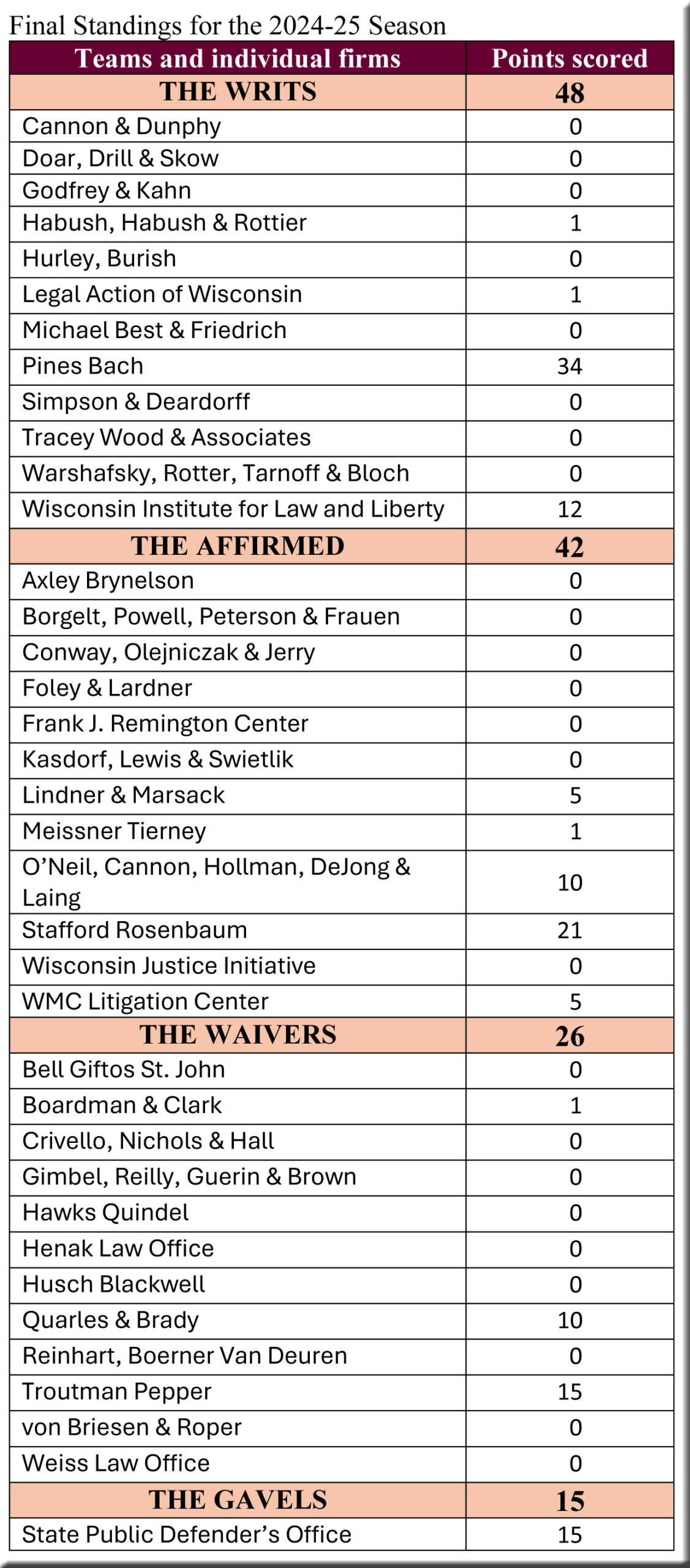These tables are derived from information contained in 266 Wisconsin Supreme Court decisions that were turned up in a Nexis Uni search for decisions filed between September 1, 1919, and August 31, 1920. The total of 266 decisions does not include various orders pertaining to petitions, motions, and disciplinary matters involving lawyers and judges.[Continue Reading…]
“Women and the Wisconsin Supreme Court”: An Update through 2024-25
The passage of three years since the last update prompts our return to the question of how frequently women have been delivering oral arguments—as representatives of the Department of Justice, the Public Defender, private firms, and all categories combined. While the tiny number of decisions filed in recent years has yielded a correspondingly small volume of oral arguments, we can compensate by comparing data for three-term clusters to obtain reasonable sample sizes. [Continue Reading…]
Wisconsin Supreme Court Statistics, 1920-21
These tables are derived from information contained in 250 Wisconsin Supreme Court decisions that were turned up in a Nexis Uni search for decisions filed between September 1, 1920, and August 31, 1921. The total of 250 decisions does not include … [Continue reading]
Measuring Polarization at the Court

Although numerous commentators have characterized the Wisconsin Supreme Court as polarized, this conclusion often seemed based on nothing more precise than acrimonious exchanges between justices or the number of 4-3 decisions filed that term. … [Continue reading]
Unanimous and 4-3 Decisions: Some Longterm Trends

At a time when the Wisconsin Supreme Court has been described as polarized, dysfunctional, and politicized,[1] some commentators have noted that fully 36% of decisions were unanimous in 2024-25—consistent with levels in previous terms and a larger … [Continue reading]
Wisconsin Supreme Court Statistics, 1921-22
These tables are derived from information contained in 285 Wisconsin Supreme Court decisions that were turned up in a Nexis Uni search for decisions filed between September 1, 1921, and August 31, 1922. The total of 285 decisions does not include … [Continue reading]
Correction for the 2024-25 Statistics
I’m grateful to a reader for bringing to my attention that I mistakenly attributed a dissent in State v. Joan L. Stetzer to Justice Protasiewicz that should have been credited to Justice Karofsky. I have corrected the four affected tables in the … [Continue reading]
The 2024-25 Fantasy League Medalists

This season featured a thrilling conclusion, with the Writs overtaking the Affirmed in the final days of competition. At its awards banquet earlier this week, the league honored not only the Writs but also the leading scorers from each team: … [Continue reading]
Wisconsin Supreme Court Statistics, 2024-25
These tables are derived from information contained in 22 Wisconsin Supreme Court decisions filed between September 1, 2024, and the end of the court’s term in the summer of 2025. The total of 22 decisions omits orders pertaining to various motions, … [Continue reading]
The 2024-25 Term: Some More Impressions

One of last year’s posts could have been titled “The Rise of the Liberals,” as we examined evidence of the court’s new liberal sway shortly after years of conservative ascendancy. Certain indications of this sea change were unprecedented, and the … [Continue reading]